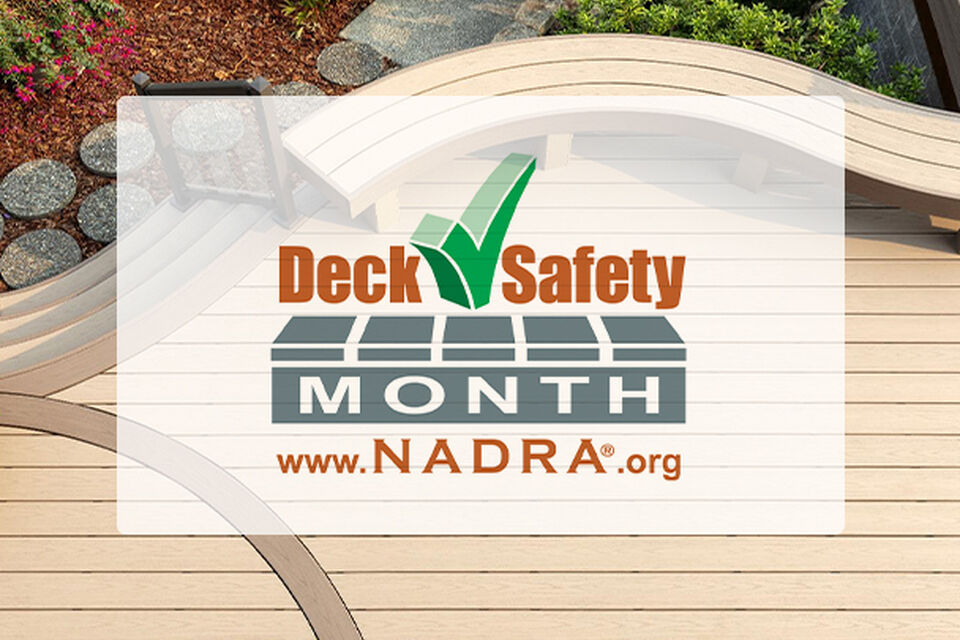May is deck safety month. The NADRA will be doing a deck safety awareness program in an effort to promote outdoor living in a safe environment. They will be recommending home owners contact a contractor to do an inspection of their deck using the following check list.
Split or Decaying Wood
Check several different areas of the deck to be sure the wood is still sound. This includes the ledger board (where the deck attaches to the house and a common source of deck failure), support posts and joists under the deck (if you can reach them), deck boards, railings and stairs. Pay special attention to any areas that tend to remain damp, are regularly exposed to water, or are in contact with fasteners. Use a tool like an ice pick or a screwdriver to penetrate the wood surface. If you can easily penetrate ¼ – ½ inch, break off a sliver of wood without splinters, or the wood is soft and spongy, decay may be present.
Flashing
Be certain the flashing is sound and firmly in place. Consider adding or replacing flashing if you notice areas that are obviously allowing water to collect.
Loose or Corroded Fasteners
Fasteners include nails, screws or anchors in the ledger board. Tighten any loose fasteners, and pound in any nails that have popped up. (Note: The ledger board should not be fastened with only nails.) If a fastener appears rusted or corroded, consider replacing it. A corroded fastener can cause deterioration in surrounding wood. ·The deck or stairs should appear even without sagging and should not sway or move when tested.
Stairs
Check any railings or handrails to be sure they are firmly held in place; check also the risers and stringers to be certain they are securely attached and not decayed. If the area behind the stair treads is open, this opening should be no more than 4” high.
NOTE: Always promote a discussion on any of the topics covered in the Tool Box Talks. Should any question arise that you cannot answer, don’t hesitate to contact your Employer.
